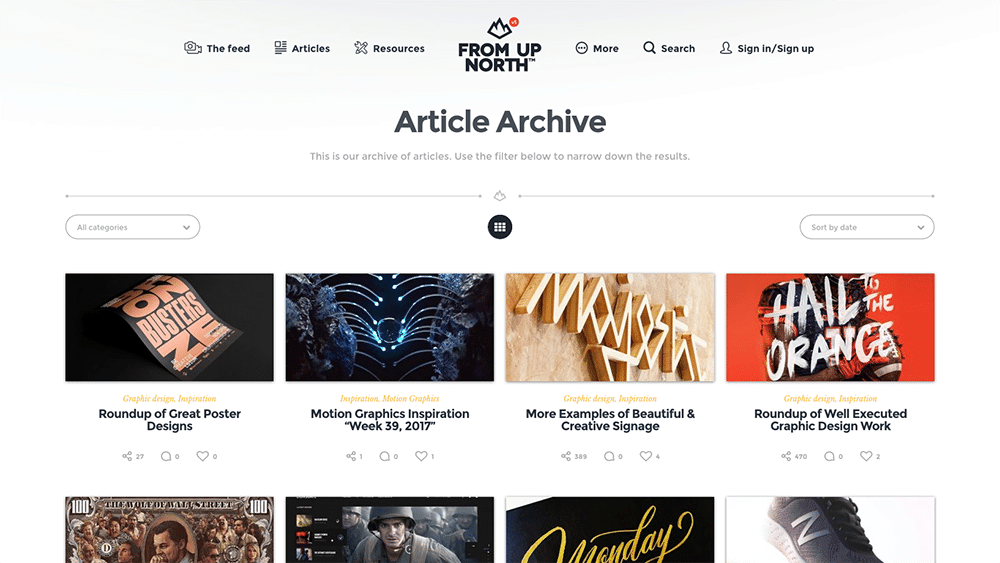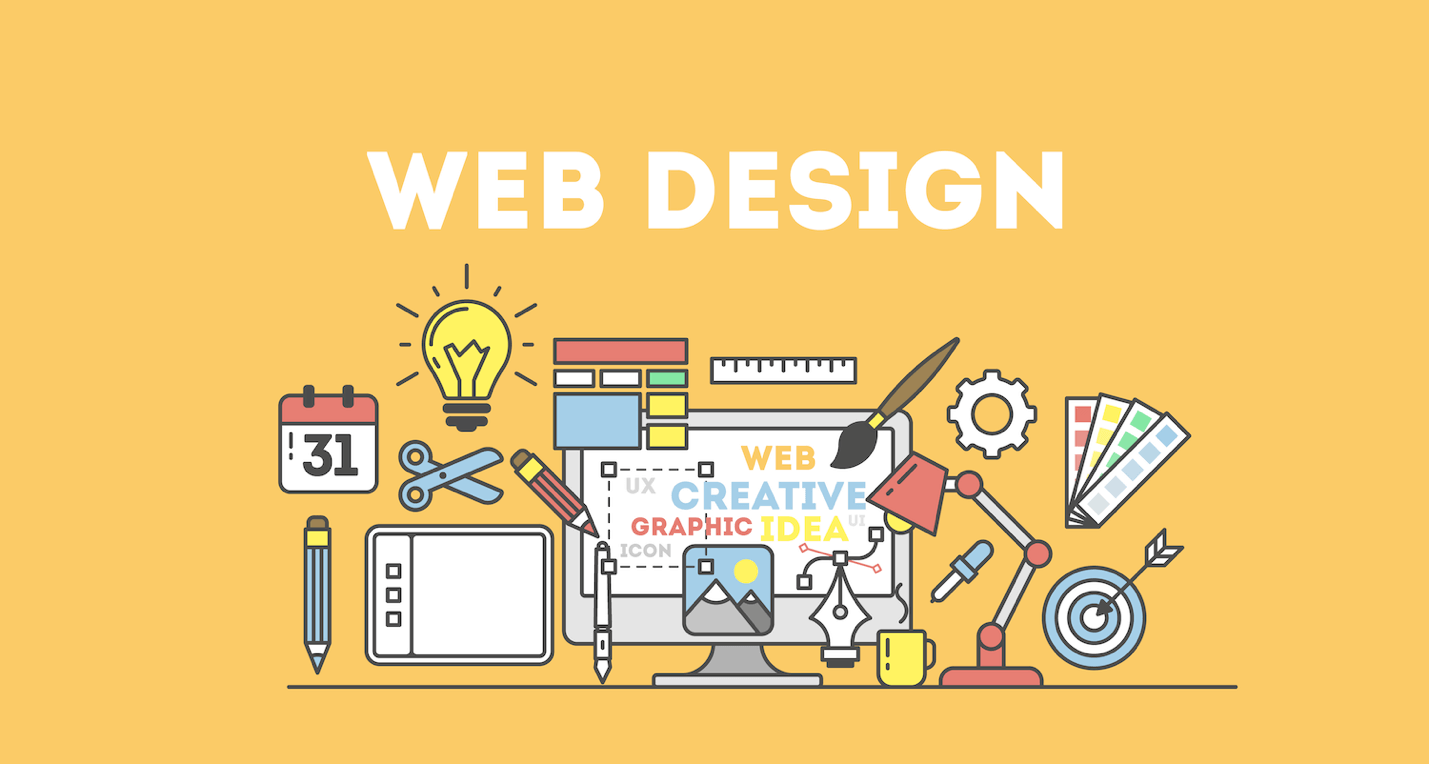Modern Site Layout That Catches Focus and Transforms
In a significantly electronic landscape, modern web site layout has actually arised as a pivotal aspect in recording customer attention and driving conversions. As we discover these essential components, it ends up being clear that recognizing their interplay can considerably influence an internet site's efficiency and user fulfillment.
Relevance of Visual Power Structure
Aesthetic pecking order is a critical element in web site style, as it guides users' interest and enhances their overall experience. By purposefully organizing material, designers can guide customers to the most crucial details initially, therefore boosting involvement and enhancing usability. Reliable aesthetic pecking order utilizes various techniques, consisting of size, comparison, color, and spacing. Larger aspects naturally draw the eye, while contrasting shades can emphasize essential messages, making them stand out amongst even more subdued parts.
Including a sensible flow in content setup is essential; as an example, placing the most vital details at the top of a page fosters immediate acknowledgment. Additionally, consistent use typography, such as varying font dimensions and styles, assists develop a clear content structure. This company not just aids in navigation however also builds depend on, as customers really feel extra comfy when they can easily locate what they are trying to find.
Inevitably, a well-executed visual power structure not just boosts aesthetic allure yet likewise significantly impacts individual actions. By prioritizing essential aspects and guaranteeing a seamless experience, developers can efficiently transform visitors into customers, reinforcing the value of this foundational design principle in modern-day web site development.
Responsive Layout for All Instruments
Developing a smooth experience across numerous gadgets is crucial in today's electronic landscape, where customers gain access to sites from desktops, tablet computers, and smart devices alike. Responsive style is an essential strategy that ensures sites adapt fluidly to various screen alignments, dimensions, and resolutions. By utilizing adaptable grids, photos, and CSS media questions, designers can produce layouts that preserve visual honesty and functionality, no matter of the gadget being used.
The importance of receptive style extends beyond appearances; it directly impacts customer involvement and conversion rates. A site that functions well on all tools urges longer gos to and lowers bounce prices, as customers are more probable to engage with content that is simple to browse. Moreover, search engines, specifically Google, prioritize mobile-friendly websites in their positions, making receptive design an important component of seo (SEARCH ENGINE OPTIMIZATION)
Including receptive style not only enhances customer experience yet also improves the advancement process. By producing a single site that works throughout tools, businesses can save time and sources contrasted to developing different mobile and desktop computer variations. Eventually, receptive style is a basic method for modern-day website style, guaranteeing accessibility and complete satisfaction for all customers, regardless of their tool.
Engaging Interactive Components
While a responsive style lays the groundwork for a practical internet site, integrating interesting interactive aspects is essential for catching user attention and cultivating deeper connections. Website Design. Interactive aspects, such as animations, tests, and clickable infographics, create a much more dynamic customer experience, urging visitors to spend more time on the site
Incorporating interactive functions can additionally guide users through facility details, making it much easier to absorb web content. For instance, interactive sliders can highlight product variants, while embedded video clips can offer demonstrations or endorsements that resonate greater than static images or text. Furthermore, gamification techniques, like benefits for completing tasks or engaging with web content, can improve individual motivation and retention.
Efficient use of interactive aspects not only enhances the customer experience yet can also lead to greater conversion rates. It is vital to stabilize interactivity with efficiency; overly complex features might impede site speed, adversely influencing user contentment.
Streamlined Navigating Practices
Reliable navigating is a keystone of any kind of successful website, as it straight affects user experience and web content availability. Structured navigating practices guarantee that individuals can quickly situate information, boosting their communication with the site. A well-structured navigating food selection must be basic and intuitive, usually including a minimal variety of primary categories to stay clear of overwhelming visitors.
To achieve streamlined navigation, designers should prioritize a hierarchical framework that practically organizes web content. Implementing breadcrumb tracks can give customers with context about their current location within the website, permitting seamless backtracking. Additionally, utilizing drop-down food selections can effectively preserve area while still giving access to subcategories.
Receptive layout is crucial, as navigation needs to be useful across all gadgets (Website Design). Mobile individuals, particularly, gain from touch-friendly menus and collapsible sections that keep use without endangering visual appeals

Reliable Call-to-Action Approaches
A well-crafted call-to-action (CTA) is essential for guiding individuals toward wanted results on a web site, as it motivates them to engage with web content or buy. To optimize their performance, CTAs ought to be clear, engaging, and purposefully positioned throughout the site.
First, make use of action-oriented language that connects seriousness or value, such as "Begin," "Join Currently," or "Insurance claim Your Discount." This language not only motivates customers yet likewise sets clear assumptions concerning the next steps.
2nd, take into consideration layout elements; CTAs should attract attention aesthetically via contrasting colors, ample whitespace, and noticeable positioning. A button that is very easy to see and click boosts the chance of individual communication.
Furthermore, personalizing CTAs based upon individual actions or demographics can considerably boost engagement. Customized messages reverberate much more with customers, driving higher conversion rates.

Verdict
To conclude, contemporary internet site layout emphasizes the integration of visual pecking order, responsive designs, involving interactive aspects, structured navigating, and reliable call-to-action strategies. These elements collectively improve customer experience, guaranteeing that site visitors continue to be engaged and motivated to check out material even more. By focusing on these design principles, businesses can significantly enhance individual retention and conversion prices, inevitably causing higher success in the electronic landscape. The continual evolution of website design emphasizes its vital function in reliable on-line communication and advertising.
In a significantly digital landscape, contemporary site style has actually emerged as a crucial factor in capturing user focus and driving conversions.Visual pecking order is a crucial component in web site layout, as it guides customers' focus and improves their general experience.The value of responsive design prolongs past visual appeals; it straight influences user engagement and conversion rates.Integrating this article receptive style not only boosts customer experience but also simplifies the growth procedure. Inevitably, receptive style is a fundamental technique for modern website design, guaranteeing ease of access and contentment for all users, regardless of their device.
 Tia Carrere Then & Now!
Tia Carrere Then & Now! Alana "Honey Boo Boo" Thompson Then & Now!
Alana "Honey Boo Boo" Thompson Then & Now! Hallie Eisenberg Then & Now!
Hallie Eisenberg Then & Now! Shane West Then & Now!
Shane West Then & Now! Jaclyn Smith Then & Now!
Jaclyn Smith Then & Now!